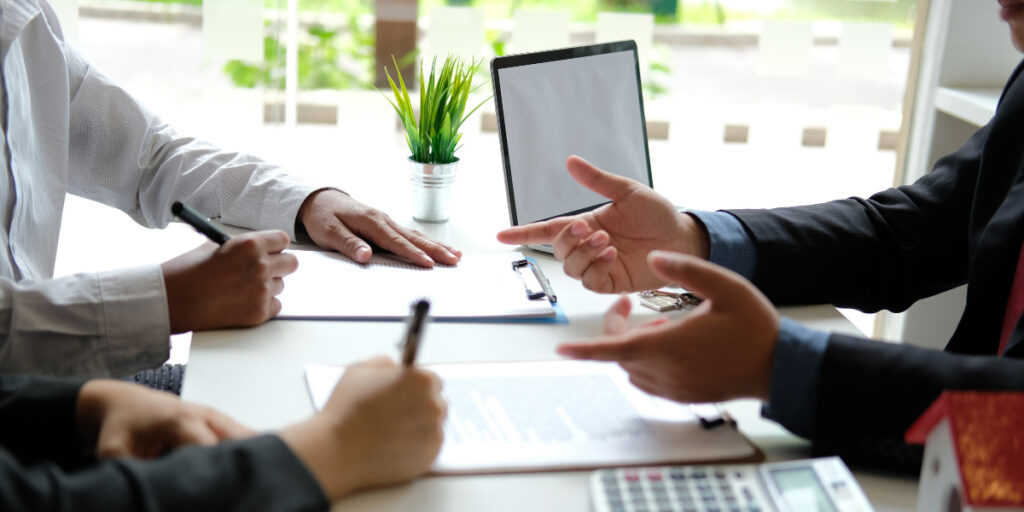
Everyone has felt the rush of anticipation—sometimes tinged with nerves—right before a high-stakes client meeting. Whether virtual or face-to-face, the stakes feel real and so does the pressure. Etiquette, especially client meeting etiquette, shapes those moments more than any pitch or proposal alone.
Across nearly every industry, professionals notice a direct link between impeccable etiquette and successful outcomes. Boundary lines between being personable and professional can blur, and knowing where you stand boosts confidence and credibility alike. Etiquette isn’t a stuffy formality, but the invisible hand that guides productive conversations.
This article unpacks actionable steps and subtle signals that transform good meetings into memorable, effective collaborations. Dive in to discover tactical approaches and scripts anyone can apply, whether you’re new to client meeting etiquette or refining your long-practiced routine.
Preparation Builds a Foundation for Every Interaction
Preparing with attention to detail sets a reliably strong tone, leaving your client feeling valued from the outset. Demonstrating readiness conveys not only respect for their time but also your own capabilities.
When you research a client’s background, tailor your agenda to their interests, and anticipate questions, it shows you’ve invested effort well beyond surface-level engagement. These pre-meeting habits create positive momentum before you even say hello.
Custom Agendas That Show Respect and Foresight
Curating a focused agenda tailored to each client reveals insight and thoughtful planning. A software consultant might list discussion points such as “review current workflows” or “address user feedback from last quarter” in a shared document before the session begins.
This approach eliminates surprises and grants everyone a sense of control. It respects busy schedules and avoids drifting into topics that don’t serve the client’s real needs.
The practice also creates space for client-driven issues. Adding a simple note: “Any priorities you’d like added?” ensures nothing is missed and signals openness and flexibility—key parts of effective client meeting etiquette.
Pre-Meeting Communication Sets Comfortable Expectations
Brief, clear email reminders help lock in details and affirm your reliability. For example, “Looking forward to connecting Thursday at 2 p.m. Eastern—let me know if any topics need extra attention” reassures the client.
State who will attend and why. “I’ve also invited Sarah, our lead designer, so we can refine visual options in real-time.” Such communication prevents surprises and gives the client time for requests or questions before the meeting.
Prompt confirmations and an offer to share supporting materials—like a slide deck or pricing sheet—reiterate thoughtfulness, consistency, and professionalism, all critical elements of client meeting etiquette.
| Preparation Tactic | Time Needed | Outcome | Actionable Next Step |
|---|---|---|---|
| Company background research | 20 minutes | Conversation relevance | List client news for reference |
| Agenda customization | 10 minutes | Focused discussion | Email your agenda draft |
| Technical check (for virtual) | 5 minutes | Smooth start | Test your mic and camera |
| Pre-meeting reminder | 5 minutes | Clear expectations | Send brief confirmation email |
| Anticipate questions | 10 minutes | Builds trust | Prepare answers in bullet points |
First Touchpoints Shape the Meeting’s Mood and Openness
Creating an inviting atmosphere right from the start helps set everyone at ease, making it easier to build trust quickly. First impressions shape how discussions unfold and can strengthen the likelihood of partnership.
From the uniformity of your early greeting to the micro-behavior of a handshake or a smile, you send cues about attention, attitude, and readiness—core parts of reliable client meeting etiquette.
Promptness and Warm Openings Signal Professional Poise
Arriving or logging in five minutes early signals reliability. A friendly, “Thanks for meeting today—appreciate your time,” invites positivity and lets the client know they’re seen as more than a transaction.
- Start with a genuine greeting to acknowledge the client’s presence, which directs the tone toward mutual respect and sets a collaborative mood.
- Sustain direct eye contact or camera focus during introductions, which helps to establish credibility and foster open communication.
- Acknowledge everyone present, by name if possible, which underscores attentiveness and recognition of individual roles and perspectives.
- Set a visible agenda or refer to shared documents right away, anchoring the conversation to clear objectives and reducing guesswork.
- Offer a quick, professional intro of your own role, helping clients understand exactly whom they’re engaging with as the meeting proceeds.
Attentive beginnings are remembered the longest; their warmth lingers throughout the exchange and encourages active participation.
Body Language and Microaffirmations Cultivate Trust
Purposeful body language supports verbal professionalism. Lean in slightly, nod in understanding, and keep gestures open—each cue signals engagement and active listening, helping the client to feel heard.
- Maintain open posture to convey sincerity and interest; this simple habit encourages dialogue and prevents perceptions of disinterest or defensiveness.
- Offer small affirmations verbally (“Absolutely, I see your point,”) to reinforce active listening, show that feedback is welcome, and guide the conversation forward.
- Smile at appropriate moments to project warmth; mirroring expressions can put nervous participants at ease and reinforce partnership.
- Take notes as conversation unfolds, which demonstrates you care about the client’s details and signals that no insight will be forgotten.
- Resist multitasking or glancing away, especially during virtual meetings; undivided attention increases respect and rapport, vital for lasting business relationships.
Applying these small but powerful actions will build rapport quickly and, when used across meetings, shape a reputation for thoughtful professionalism.
Concise, Focused Communication Keeps Meetings Productive
Meetings thrive on clarity and efficient use of time. Centering each discussion point makes progress measurable and signals respect for busy schedules—a pillar of strong client meeting etiquette.
Cutting through ambiguity by keeping topics sharp accelerates decision-making and helps everyone leave with actionable takeaways, rather than vague impressions or lingering confusion.
Guided Conversation with Explicit Time Checks
Stating, “We have 30 minutes, so let’s keep discussion on the new migration plan to under fifteen,” creates structure and shows you value everyone’s calendars as much as your own.
Mid-meeting, try, “Let’s pause and confirm if these next steps match expectations,” to avoid surprises and adapt as needed. Steering sessions with gentle time reminders prevents drift and helps participants stay engaged.
Wrap with, “Anyone have quick final questions?” so lingering issues are aired, not buried, as the clock winds down. These scripts reinforce considerate, effective client meeting etiquette.
Clear Visual Aids Support Rigorous Dialogue
Share succinct slides or diagrams that relate directly to decisions on the table. For a marketing review, one-slide overviews of each proposed headline keep conversations moving and reduce over-talking.
Visuals channel attention productively and replace inefficiency with shared understanding. Reference these aids aloud: “Let’s look at Heather’s chart now”—this orients everyone and minimizes misunderstanding.
Using visuals as anchors for decision-making is a critical hallmark of high-level client meeting etiquette, preventing confusion and reinforcing your value as a collaborative partner.
Handling Challenging Scenarios with Tact and Solutions
Missed expectations or disagreements are inevitable; responding constructively preserves trust and sets a professional standard for recovery. Strategic responses protect long-term partnerships, even during tense discussions.
Approaching difficult topics calmly ensures everyone feels heard, and equips you to guide the meeting back on track efficiently—a vital sign of mastered client meeting etiquette.
Redirecting Conversations Diplomatically
When conversation strays or emotions spike, interject gently: “I hear the concern, and we can schedule a dedicated follow-up. For now, let’s finish our agenda—will that work?”
This move reestablishes focus without invalidating anyone’s contributions. Anchoring back to agreed points restores productive direction while respecting the client’s need to be acknowledged.
If tensions rise, model calm—lower your tone, take a breath, and affirm next steps. For example, “We value your feedback—I’ll loop back tomorrow with a proposal that addresses your input.”
Offering Concrete Solutions in Real Time
Share possible fixes: “Would sending a revised contract by noon address your concerns?” Present specifics to show you are solution-oriented and to reduce client anxiety.
If the issue needs technical validation, acknowledge the limit: “I’ll involve our analyst after this call and respond within two hours.” This script avoids empty promises and builds faith in your process.
Write follow-up action points on shared screens or whiteboards, visible to all. This clarity anchors accountability and signals your role as a proactive problem-solver, further underscoring effective client meeting etiquette.
Follow-Through that Sustains Trust Beyond the Meeting

Client relationships flourish on dependable follow-through. Swift, accurate action afterward cements impressions set in the meeting itself. These small post-meeting steps build reliability and long-term satisfaction.
Sending clear summaries, prompt answers, and documented next steps ensures agreements turn into outcomes—a signature move in world-class client meeting etiquette.
Summaries and Documentation Eliminate Ambiguity
Send a concise recap email within two hours, listing action items, responsibilities, and deadlines. For example, “Attached is our action summary: I’ll send the demo link by Thursday noon; please confirm contract language by Friday.”
Attach any promised materials, such as slide decks or follow-up reports, in a single message for easy reference. This minimizes email clutter and proves you honor commitments discussed in person or on video.
Clarify any unresolved details and invite corrections: “Let me know if I’ve missed anything—happy to update so we’re aligned.” This inclusive approach shows ongoing respect and ownership.
Consistent Check-Ins Maintain Engagement
Follow up on open items—”Checking in to see if the test results matched your needs. Anything further to adjust?”—to keep momentum and show you care about outcomes as much as initial discussions.
Scheduling short status calls every few weeks reassures clients that communication is ongoing, not transaction-based. A simple, “Just wanted to share progress on your feedback,” reinforces transparency and partnership.
Make these check-ins routine parts of your calendar; steady communication protects against misunderstandings and upholds the best in client meeting etiquette.
Strategic Etiquette Enhancements for Virtual Meetings
Virtual spaces add new variables to client meeting etiquette. Mastering technical basics, visual presentation, and digital cues makes remote interactions just as professional and impression-driving as face-to-face meetings.
These enhancements blend formality with the needs of modern business. They combat distance and technology-driven distractions by leveraging personalized, creative approaches to digital rapport.
Camera, Sound, and Backgrounds Reflect Professionalism
Confirm camera angles are head-on, not upward-facing. Clear backgrounds—either tidy real offices or subtle virtual images—keep focus on you, not distractions.
Use a solid microphone or headset. Audio breaks erode credibility, so invest in tools that keep your voice crystal-clear. Say, “Let me know if my audio drops at any point,” to invite immediate corrections.
Dress for the occasion, even virtually; business-appropriate attire signals respect across the digital divide. This consistency safeguards strong client meeting etiquette, no matter where you’re located.
Managing Virtual Interruptions and Engagement
Kick off meetings with: “If anyone has issues with sound, just wave. I’ll stop and address it.” This normalizes technical challenges and keeps everyone engaged.
Use names to prompt quieter participants: “Ashley, your thoughts on the timeline?” When possible, turn on captions for accessibility, and refer to shared screens as “visible to all.” Addressing everyone concretely increases inclusivity.
Summarize virtual chat comments as voice notes: “I see a great question in chat from Carol—let’s address it.” This helps digital conversations feel as natural as face-to-face dialogue, key for high-value client meeting etiquette.
Building Reliable Habits for Winning Client Relationships
Deliberate preparation, mindful communication, and consistent follow-through embody the best client meeting etiquette. Applying these actions transforms every interaction into an opportunity to build trust and demonstrate value.
Each step, from opening greetings to post-meeting check-ins, deepens your reliability. These techniques ensure clarity and warmth, even in the most challenging scenarios or technologically mediated spaces.
Integrate these etiquette habits into your daily routines to earn trust and distinguish yourself as a true professional. The returns on these investments appear quickly, with long-lasting benefits for clients and your career.
Frequently Asked Questions
What should I do if a client arrives late to our meeting?
Greet them warmly and thank them for joining. Briefly recap missed points and smoothly transition into the agenda. Avoid drawing attention to the delay and keep the focus on the meeting’s purpose.
How early should I send a meeting agenda and reminder?
For most meetings, send an agenda at least one business day in advance and a brief reminder email the morning of the meeting. This demonstrates planning and helps everyone prepare effectively.
How do I handle disagreements in a client meeting without escalating the situation?
Restate your understanding of the client’s point, clarify misunderstandings calmly, and propose next steps. A good phrase is, “Let’s address concerns and explore solutions together.” Stay neutral and constructive.
What is appropriate attire for virtual client meetings?
Dress as you would for an in-person professional setting, typically business casual or appropriate to your industry. Your appearance sets a respectful tone, even on video calls. Avoid overly casual clothing or distracting backgrounds.
What’s the best follow-up after a meeting?
Send a concise summary highlighting key decisions, action items, and deadlines within a few hours. Attach supporting materials and clarify any open questions. This prompt recap builds confidence and enhances ongoing collaboration.

Office Meeting Etiquette: Practical Tips
Boost your credibility and influence at work with practical office meeting etiquette.

